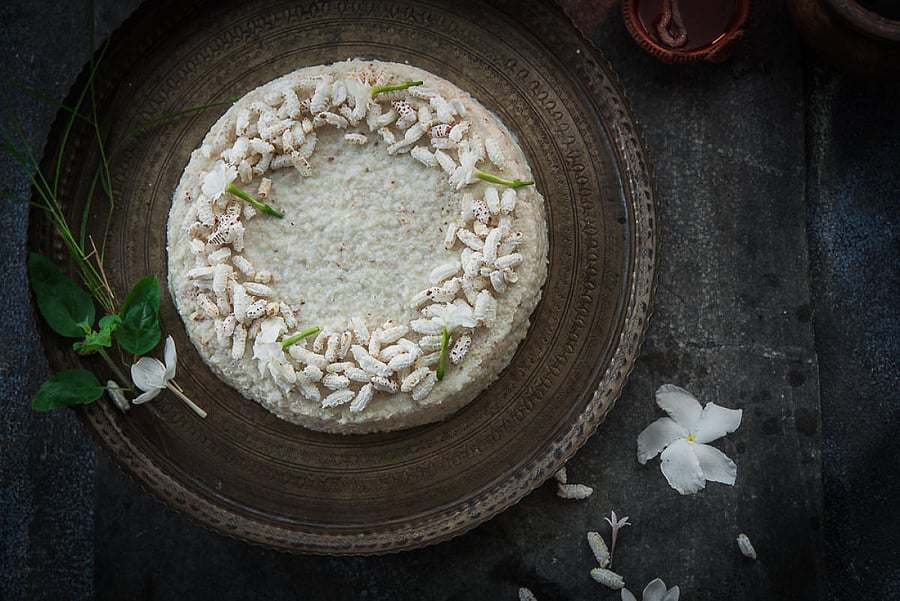
A few years ago as part of the Four Hand Collaboration when celebrity chef Tanja Grandits created a menu with ‘eat the rainbow’ trend as its foundation thought, it took the culinary world by surprise.
Known for her monochromatic streak, the menu, which was an ode to farmers and humble ingredients, challenged the very concept of monochrome that the modern culinary world was used to. Instead of being a one tone dish, which was a standard practice till then, the Michelin star awarded restaurant chef’s creation was a foreplay of techniques, ingredients and natural tones.
But was the top lady chef the first to play monochrome with her dishes? Not at all. For a generous part of modern culinary history, monochrome, a term that found its origin (and romance) in the Roman court (especially that of Emperor Nero), was an integral part of fine dining. It was as much a recurring theme in ornated cutlery that graced the lavish tables of powerful courts (Roman, French, British Egyptian, Ottoman and even the Mughals) as it was a part of the dishes. A brilliant example of this was Badshah Shah Jahan’s table that showcased food as jewels by making ingredients its star.
Queen Victoria too had a similar table where monochrome desserts were an essential part of the spread. But the finest example of monochrome dishes was the spread laid out by Marie Antoinette at her summer house where she loved showcasing the garden produce, and of course, Henry VIII who formalised the buffet layout. So, what was the Basel-based chef’s contribution to a culinary technique that for most part of its royal existence (and more) is known for its aesthetics? Grandits’ take on monochrome dishes brought to fore the fact that monochrome plating wasn’t about using food colouring but natural shades that were accentuated with the technique and a chef’s deep understanding of ingredients.
Concurs culinary anthropologist and monochromatic specialist Sabyasachi Gorai, who took to curating single tone dishes with ancient culinary techniques almost a decade ago. “The thing about monochrome dishes isn’t just about taking a single colour and presenting the different hues like a painter’s palette — but using the culinary techniques on different ingredients to get different tones of a single colour,” says Chef Gorai, who recently created the Namak Boti as an example of the art, where he used salt and heat to bring forth the different hues of charred brown and pink in the meat.
Another good example of traditional monochrome is Mexican specialist Chef Vikas Seth’s Tres Leches, which is a play of white on white. “Even the cake has a white tinge thanks to the tradition of soaking the cake in milk for hours,” says Chef Seth, who believes monochrome was a theme selected by ancient people to create not only popular culinary masterpieces but also dishes that would make the grade in terms of wellness too.
Take the example of saag, says culinary wizard Pradeep Tejwani, “it is nothing but a play of greens. Or for that matter gatte ki sabzi which uses gram flour two ways to create a dish that is functional, tasty and presentable.” In fact, says Chef Tejwani, “Indian cuisine is full of dishes that are monochromatic in nature and were designed not only for the eye appeal but the palate and health.”
Like the kheer and its varieties, points out Chef Gorai, who says that the melange of rice and milk wasn’t just to create a sweet, it was also to calm the mind. Little surprise that we have so many versions of kheer in our kitty that fit into the concept of monochrome including the gointa kheer, which is a play on white, and the Manipuri black rice, which is a ‘black wonder,’ says Odia culinary custodian Alka Jena, who finds the Odia tomato khatta as another brilliant monochromatic dish in our kitty. For Chef Tejwani however, it is the whole barrage of fritters as the finest way of creating monochromatic dishes. “The sheer colour can change depending not only on the batter you use but also the frying technique that can give you hues that range from bright yellow to glistening gold, much like the Dimer Chop you get in Kolkata.”
What’s the secret of creating a good monochromatic dish? For Chef Seth, who has created a series of monochromatic dishes for his Sense & Sensibility initiative, “It is the composition. What you do is find a hero ingredient and then choose techniques and other products that can play a role in creating the hues. A good example of this is a mushroom that works on the theme of grayscale with fascinating finesse.”
Chef Gorai on the other hand looks for classic pairing to “ensure a strong foundation of taste.” For Tejwani it is, of course, the hues that often can determine the outcome. Like beetroot, he says, “which has an uncanny ability to turn every other ingredient a bright red or pink colour and an absolute delight to play with — and could be equally challenging too.”
In the end, say, experts, “the brilliance of monochromatic dishes is about getting the best of the natural colour that makes your plate look akin to a masterpiece — akin to nature.”